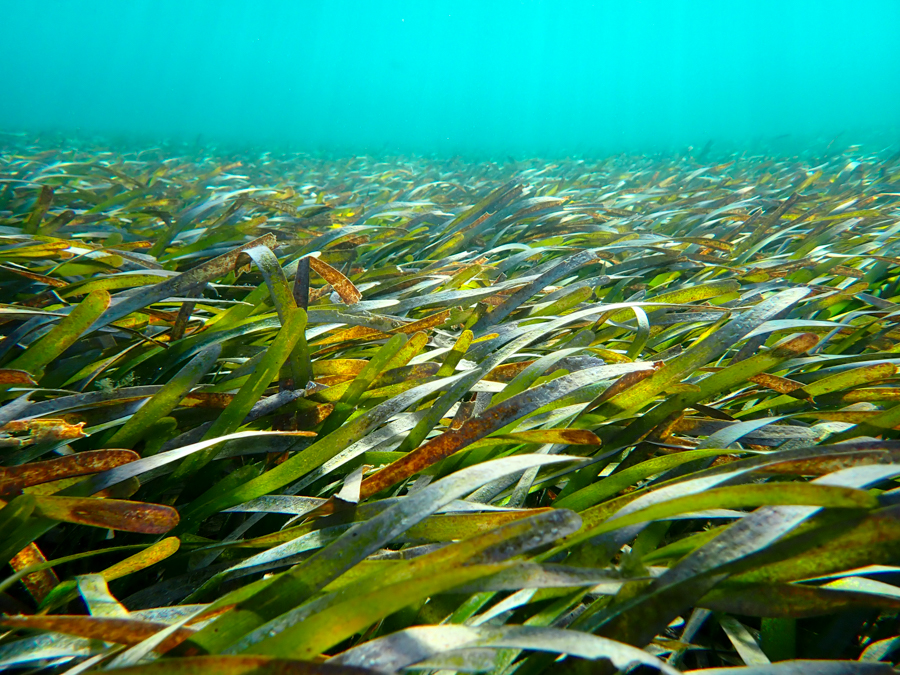This paper stems from our field research in the Galápagos Islands conducted earliler in the Global Reef expedition. It discusses marginal coral populations and how the densest known aggregation of Pocillopora in the Galápagos Archipelago is of asexual origin.
Coral populations at distributional margins frequently experience suboptimal and variable conditions. Recurrent El Niño-Southern Oscillation (ENSO) warming events have caused extensive mortality of reef-building corals in the Eastern Pacific, and particularly impacted branching pocilloporid corals in the Galápagos Islands. Pocillopora spp. were previously more common and formed incipient reefs at several locations in the Archipelago but now occur as scattered colonies. Here, we report an unusually concentrated aggregation of colonies and evaluate their current genetic diversity. In particular we focus on a large population of 1614 live Pocillopora colonies found in a volcanic lagoon along the southern shore of Isabela Island. Forty seven colonies were sampled, primarily using a spatially explicit sampling design, and all colonies belonged to Pocillopora mitochondrial open reading frame lineage type 3a. Typing of additional Pocillopora samples (n = 40) from three other islands indicated that this stand is the only known representative of type 3a in the Galápagos Islands. The Isabela Pocillopora type 3a colonies harbored Symbiodinium ITS-2 clade C1d. Multilocus genotyping (n = 6 microsatellites) capable of resolving individual clones indicated that this stand is monogenotypic and thus the high density of colonies is a result of asexual reproduction, likely via fragmentation. Colony size distribution, while imperfect, suggested the stand regrew from remnant colonies that survived the 1997/98 ENSO event but may postdate the 1982/83 ENSO. The community of Pocillopora colonies at Isabela is of particular ecological value due to its high density and support of associated organisms such as fish and benthic invertebrates. The Galapagos Pocillopora corals will continue to provide insights into the genetic structure and population dynamics of marginal coral populations.
INTRODUCTION:
Many reef building corals occur over large geographic ranges and experience suboptimal and variable conditions especially at their distribution margins. Hence, marginal populations can provide unique insights into how corals might respond to climate change (Guinotte et al., 2003;Lirman and Manzello, 2009;Hennige et al., 2010;Goodkin et al., 2011). For example, coral communities in the tropical eastern Pacific (TEP) already experience seasonal cold upwelling, El Nino Southern Oscillation warm events and reduced aragonite saturation states (Glynn and Colgan, 1992;Fong and Glynn, 2000).
The Galápagos Islands harbor some of the most vibrant coral communities in the remote Tropical Eastern Pacific. The center of the archipelago is located 1,000 km offshore from the equatorial South American coastline and 1,200 km away from the more diverse central Pacific coral communities. Recent analyses show that the offshore islands are well connected with coral populations along the Central American coast (Pinzón and LaJeunesse, 2011;Baums et al., 2012). Coral communities in the Galápagos Islands have experienced large scale bleaching events killing 97-100% of colonies during the 1982/83 El Niño-Southern Oscillation (ENSO) event (Glynn, 1988). Recent (primarily 1982/83 and 1997/98) ENSO events left a legacy of depressed coral populations (Glynn, 2003). Whereas Porites mostly recovered at the northern-most reefs at Darwin Island, Pocillopora density is still lower than prior to the ENSO events (Glynn et al., 2009). Even more limited recovery of Pocillopora has occurred in the central and southern Archipelago (Feingold and Glynn, 2014).
Branching corals in the genus Pocillopora form ecologically important reef structures throughout the tropical eastern Pacific (TEP). Pocillopora is the primary constructor of modern reefs in the Eastern Pacific (Toth et al., 2012) and provides habitat for associated reef species in this low-diversity coral system (Glynn, 2004). In the Galápagos Islands, pocilloporid reef structures were known within the shallow basin of the nearly submerged volcanic cone, Devil’s Crown, Floreana (Glynn and Wellington, 1983). Also, aggregations of colonies that formed incipient reefs were observed within semi-enclosed lava pools at Punta Espinosa, Fernandina Island, and well-developed communities occurred on the islands of San Cristobal, Española and Darwin (Glynn, 1994;2003;Glynn et al., 2009). However, these structures were lost due to impacts associated with the 1982-83 El Niño-Southern Oscillation (ENSO) event and subsequent bio-erosion. In all previously studied research sites in the archipelago, Pocillopora now occurs only as isolated, scattered colonies. One such recovering population of scattered Pocillopora is now present at the former reef site in Devil’s Crown (Feingold and Glynn, 2014), but no live colonies have been noted in the lava rock pools of Punta Espinosa (Glynn, 2003). Recently, high densities of Pocillopora colonies were observed in the Concha y Perla Lagoon on the southern coast of Isabela Island (M Schmale, personal communication). Here, we set out to characterize the genetic diversity of the corals and their associated Symbiodinium dinoflagellates in this isolated yet highly dense population of Pocillopora and compare it to other Pocillopora collections from throughout the Galápagos Islands…


